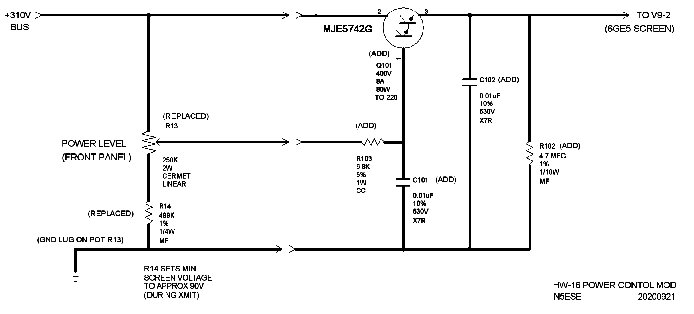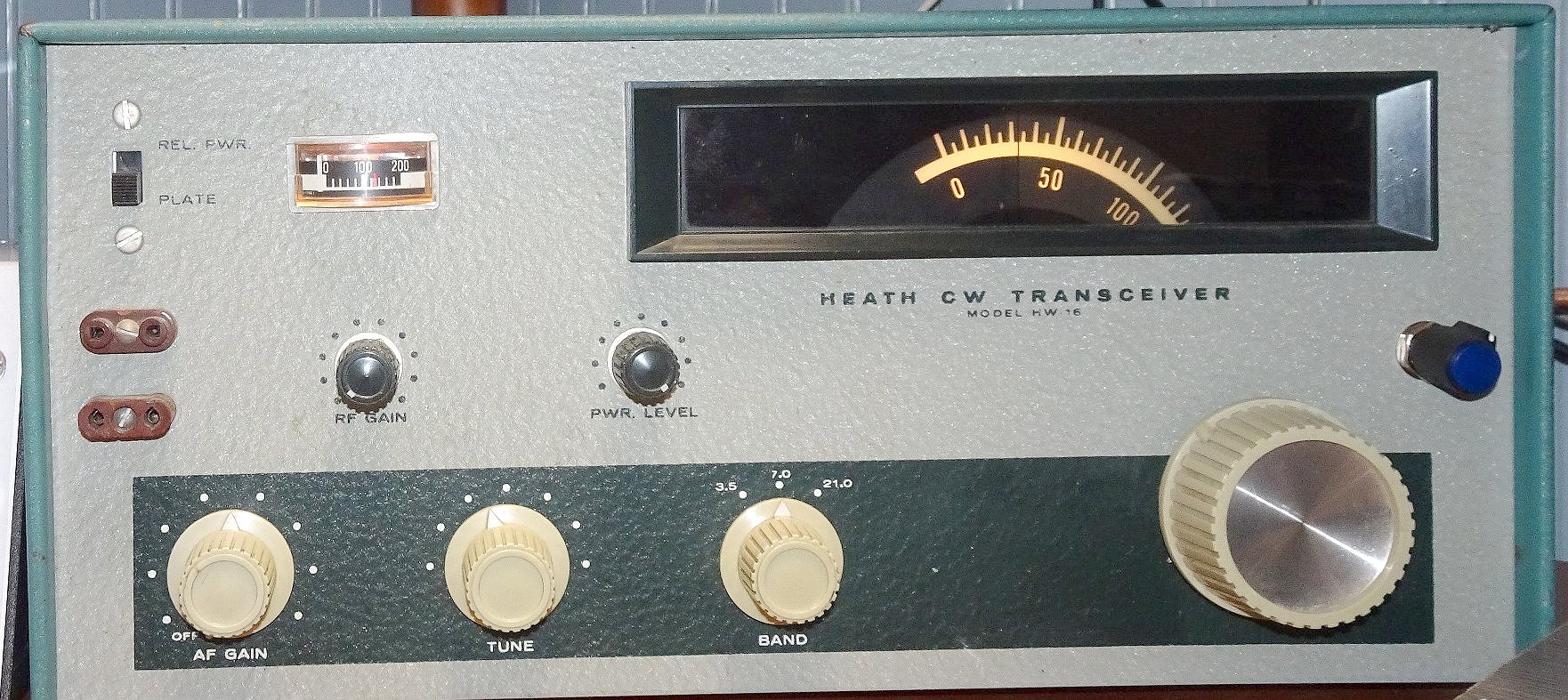
(click on any picture to see larger version)

In the HW-16 RX/TX (as Heathkit designed it), there is no "Drive" Control as vintage rigs frequently have. Instead, there is a "PWR LEVEL" front panel control, which is a 2-Watt Carbon Pot which (by user control) provides roughly 150 to 260 VDC to the screen grid of the final amp (a 6GE5 sweep tube). The control (if working) will generally provide 20-50 Watts of RF Output, all else being equal. These pots frequently wear out, because they are very marginally rated for the task. To make matters more challenging, 2-Watt pots are getting harder and harder to find, in carbon or plastic or cermet - and when you do find them, they're expensive
Further, many ops (like myself) enjoy operating QRP and would really like to be able to turn power down to 5 Watts, when desired.
The mod described herein provides a a means of replacing the original PWR LEVEL pot with a lesser wattage, readily available pot, and further, allows smooth control of RF Output power down to QRP level.
We like that Heathkit controlled Screen Grid Voltage (to the PA) as a means of controlling RF output power, and we'll stick with that approach. But instead of expecting a potentiometer to carry screen current (with it's attendent power dissipation), we'll assign that task to a power transistor, and then we'll controlTHAT via our front panel PWR LEVEL control. Here's a schematic:

(click on any picture to see larger version)
We've selected a NPN Darlington-configured MJE5742 as our pass transistor. Being a darlington, it has very high current gain, and we can expect much less than 1 mA is needed for base control current. Being high-voltage (400V rating) it will easily take the 305V maximum voltage. And being in a TO-220 package (and bolted to an aluminum sink), it will handily dissipate whatever few watts we might encounter. Our new PWR LEVEL control pot, on the other hand, will operate well within its rating. I used a 2-watt 250K cermet, but since dissipation is less than 1/3-watt, you could select a 1-Watt pot. Don't be tempted to use 1/2-Watt pot, however, as pots need lots of margin in this type of application. Do, if possible, select a cermet pot.
We mounted most of the componentry onto perf board. We mounted the pass transistor on a small sheet of aluminum, being sure to use an insulator kit for a TO-220. Here are two images that show it mounted into the HW-16 chassis:
(click on any picture to see larger version)
For more details on part numbers and selections, and "how to" details, see my HW-16 MODS notes, and scroll down to "Actions 20200921"
The new PWR LEVEL control now works like a charm. I like to run the HW-16 at 40 watts output (looking at my SWR Meter). The new control is smooth and stable, and I can tune up and set that power easy-peasy.
If I want to go QRP, I first tune up at normal power, then turn the PWR LEVEL pot to the left until my SWR meter indicates about 8 Watts. If you go much below 8 watts (at least on my tired old PA tube), the tube may suddenly shut down. If that's the case, turn it up a smidgeon and then detune the plate TUNE control to the left (toward max capacitance) until you're running 5 watts. It's as easy as that!
73,
Monty N5ESE
dit dididit dit